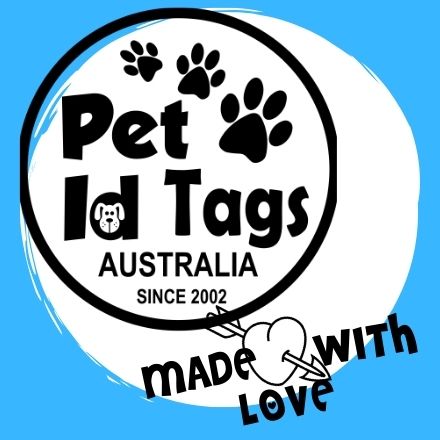When it comes to our beloved furry friends, their safety and security is always a top priority. That's why every responsible pet owner should understand the importance of dog tags. These small, metal tags may seem like a simple accessory, but they can be a lifesaver in multiple ways.
Dog tags serve as identification for our pets, providing crucial information such as their name, your contact information, and if applicable, any medical conditions or allergies they may have. This ensures that if your pet ever gets lost, they can be easily identified and safely returned to you.
But dog tags do more than just provide identification. They also act as a visible sign that your pet is owned and loved, discouraging potential thieves from taking them. Additionally, some tags come with advanced features like microchips, which can be scanned by animal shelters or veterinarians to access your contact information quickly.
In conclusion, dog tags are a vital tool in ensuring your pet's safety and security. By having them wear a tag with your contact details, you can increase the chances of a lost pet being reunited with their owner promptly. So, don't underestimate the power of this small but essential accessory for your furry friend's well-being.
What are dog tags and why are they important?
When it comes to our beloved furry friends, their safety and security is always a top priority. That's why every responsible pet owner should understand the importance of dog tags. These small, metal tags may seem like a simple accessory, but they can be a lifesaver in multiple ways.
Dog tags serve as identification for our pets, providing crucial information such as their name, your contact information, and if applicable, any medical conditions or allergies they may have. This ensures that if your pet ever gets lost, they can be easily identified and safely returned to you.
But dog tags do more than just provide identification. They also act as a visible sign that your pet is owned and loved, discouraging potential thieves from taking them. Additionally, some tags come with advanced features like microchips, which can be scanned by animal shelters or veterinarians to access your contact information quickly.
In conclusion, dog tags are a vital tool in ensuring your pet's safety and security. By having them wear a tag with your contact details, you can increase the chances of a lost pet being reunited with their owner promptly. So, don't underestimate the power of this small but essential accessory for your furry friend's well-being.
The history of dog tags and their significance
Dog tags are small, metal identification tags that are attached to a dog's collar. They typically contain information such as the pet's name and the owner's contact details. Dog tags are important because they provide a means of identification for your pet. In the unfortunate event that your pet goes missing, having a dog tag can greatly increase the chances of them being found and returned to you.
Dog tags are also important because they act as a visible sign that your pet is owned and loved. This can deter potential thieves from taking your pet, as they know that the pet is not a stray. Additionally, some dog tags come with advanced features like microchips, which can be scanned by animal shelters or veterinarians to quickly access your contact information.
Having a dog tag for your pet is not only essential for their safety and security but also for your peace of mind. Knowing that your pet is easily identifiable and can be returned to you if lost brings a sense of comfort and reassurance.
The legal requirements for dog tags in different countries
The use of dog tags for identification dates back to the early 19th century. During the Civil War, soldiers were issued metal identification tags to help identify them in case of injury or death. These tags, which were often worn around the neck, contained the soldier's name, regiment, and other relevant information.
The concept of using dog tags for pets was inspired by the military's use of identification tags. The idea behind pet dog tags was to provide a means of identification for pets in case they got lost or separated from their owners. Over time, dog tags became a common accessory for pets, and their significance in ensuring the safety and security of pets grew.
Today, dog tags are widely recognized as an important tool in pet identification. They are an easy and effective way to ensure that your pet can be quickly identified and returned to you if they ever go missing.
The benefits of having dog tags for your pet's safety and security
The legal requirements for dog tags vary from country to country. In some countries, it is mandatory for dogs to wear tags with specific information, while in others, it is not legally required but highly recommended.
In the United States, for example, most states require dogs to wear a tag with the owner's contact information. Some states also require additional information such as the dog's license number or proof of vaccination. Failure to comply with these requirements may result in fines or other legal consequences.
In the United Kingdom, it is a legal requirement for all dogs to wear a tag with the owner's name and address. The Control of Dogs Order 1992 states that any dog in a public place should wear a collar with the owner's details engraved or written on the tag. Failure to comply with this requirement may result in a fine of up to £5,000.
It is important for pet owners to familiarize themselves with the legal requirements for dog tags in their respective countries and ensure that their pets are in compliance. By doing so, they can avoid any potential legal issues and help ensure the safety and security of their pets.
Different types of dog tags and their features
Having dog tags for your pet offers numerous benefits for their safety and security. Here are some of the key advantages:
1. Easy identification: Dog tags provide a quick and easy way for someone to identify your pet. By including your contact information on the tag, anyone who finds your lost pet can easily reach out to you and facilitate their safe return.
2. Deterrence of potential thieves: Dog tags act as a visible sign that your pet is owned and loved. This can discourage potential thieves from taking your pet, as they know that the pet is not a stray and has an owner who is actively looking out for them.
3. Microchip compatibility: Many dog tags now come with advanced features like microchips. These microchips can be scanned by animal shelters or veterinarians to quickly access your contact information. This provides an additional layer of security and increases the chances of your pet being reunited with you if they get lost.
4. Peace of mind: Knowing that your pet is wearing a tag with your contact details brings peace of mind. Even if your pet goes missing, you can rest assured that they have a higher chance of being found and returned to you promptly.
How to choose the right dog tags for your pet
Dog tags come in various types and styles, each offering different features and benefits. Here are some of the most common types of dog tags:
1. Traditional metal tags: These are the classic dog tags made of metal that are attached to a collar. They typically include the pet's name and the owner's contact information. Traditional metal tags are durable and can withstand everyday wear and tear.
2. Engraved tags: Engraved tags are made of metal but feature engraved text instead of raised letters. The advantage of engraved tags is that the text is less likely to wear off over time, ensuring that the information remains legible for longer.
3. QR code tags: QR code tags are a modern alternative to traditional dog tags. These tags feature a QR code that can be scanned with a smartphone. When scanned, the QR code directs the scanner to a website or online profile containing the pet's information and owner's contact details.
4. Microchip tags: Microchip tags combine the benefits of traditional dog tags with the added security of a microchip. These tags have a built-in microchip that can be scanned to access the pet's information. Microchip tags are often used in conjunction with a traditional tag for maximum security.
When choosing a dog tag for your pet, consider factors such as durability, legibility, and compatibility with other identification methods. It's also important to regularly check and update the information on the tag to ensure its accuracy.
Tips for properly engraving your pet's information on the dog tags
Choosing the right dog tags for your pet is essential to ensure their safety and security. Here are some factors to consider when selecting dog tags:
1. Durability: Look for tags made of durable materials that can withstand everyday wear and tear. Metal tags are a popular choice due to their durability.
2. Legibility: Opt for tags with clear, easy-to-read text. Avoid tags with small or overly decorative fonts that may make the information difficult to read.
3. Size and weight: Choose a tag size that is appropriate for your pet's collar. The tag should be large enough to accommodate all the necessary information but not too heavy or bulky for your pet to comfortably wear.
4. Engraving options: Consider whether you prefer raised lettering or engraved text. Engraved tags tend to be more durable and less likely to wear off over time.
5. Additional features: If desired, look for tags with additional features such as microchips or QR codes. These can provide added security and convenience.
Remember to regularly check the condition of your pet's tags and replace them if they become damaged or illegible.
Other methods of identification for pets
Properly engraving your pet's information on the dog tags is crucial to ensure their effectiveness. Here are some tips to help you engrave the tags accurately:
1. Choose a reputable engraver: Look for a professional engraver with experience in pet tags. They will have the necessary tools and expertise to engrave the tags accurately.
2. Double-check the information: Before submitting the information for engraving, double-check that it is correct and up to date. Ensure that the pet's name and your contact details are accurate and free of any errors.
3. Use clear and legible fonts: Opt for clear and legible fonts that are easy to read. Avoid using fancy or decorative fonts that may make the information difficult to decipher.
4. Consider including additional information: In addition to the pet's name and your contact details, you may also want to include any relevant medical information or allergies. This can be especially important in case of emergencies.
5. Regularly check the condition of the tags: Over time, the engraving on the tags may become less legible due to wear and tear. Regularly check the condition of the tags and replace them if necessary.
By following these tips, you can ensure that your pet's tags are accurately engraved and can be easily read if needed.
Common misconceptions about dog tags and pet identification
While dog tags are a popular and effective method of pet identification, there are also other options available. Here are some alternative methods of identifying your pet:
1. Microchipping: Microchipping involves implanting a small microchip under your pet's skin. This chip contains a unique identification number that can be scanned to access your contact information. Microchipping is a permanent form of identification that cannot be lost or removed.
2. Tattoos: Some pet owners choose to have their pets tattooed for identification purposes. These tattoos are typically placed inside the pet's ear or on their belly. Tattoos can be a visible form of identification but may fade or become less legible over time.
3. GPS trackers: GPS trackers are small devices that can be attached to your pet's collar. These devices use GPS technology to track your pet's location in real-time. GPS trackers are particularly useful for pets that have a tendency to wander or escape.
4. Identification cards: Some pet owners choose to carry identification cards with their pet's information. These cards typically include the pet's name, a photo, and the owner's contact details. Identification cards can be helpful if you and your pet are separated and someone finds your pet.
It's important to note that while these alternative methods of identification can be beneficial, they should not replace the use of dog tags. Using multiple forms of identification can provide an extra layer of security and increase the chances of your pet being safely returned to you if lost.
Conclusion: The peace of mind that comes with proper pet identification
There are some common misconceptions about dog tags and pet identification that are important to address:
1. "My pet is microchipped, so they don't need a tag." While microchipping is an important form of identification, it should not replace the use of dog tags. Dog tags are a visible form of identification that can quickly and easily provide someone with your contact information.
2. "My pet never leaves the house, so they don't need a tag." Even if your pet is primarily an indoor pet, accidents can happen. An open door or a broken fence can result in your pet escaping. Having a tag with your contact details ensures that if this does happen, your pet can be quickly identified and returned to you.
3. "Dog tags are uncomfortable for pets to wear." With the wide variety of dog tags available today, it is possible to find tags that are comfortable for your pet to wear. Look for lightweight tags and ensure that they are properly attached to your pet's collar.
4. "My pet is well-behaved and won't run away." Even the most well-behaved pets can unexpectedly get lost or separated from their owners. It's better to be prepared and have proper identification for your pet, just in case.
By addressing these misconceptions, pet owners can better understand the importance of dog tags and the role they play in ensuring the safety and security of their beloved pets.



